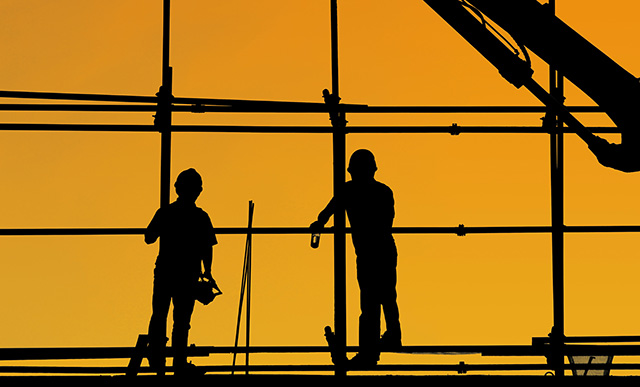Construction During COVID-19

(Photo by Yancy Min, Unsplash)
By Albert Vargas
Joshua Brito, 31, works for a construction company in the Bronx and was eager to return to work after almost two months of vacation, without pay.
During this unpredictable pandemic, construction was shutdown in New York, impacting the finances of thousands of residents and leaving many unemployed. Construction is the sixth largest sector in the U.S., employing 11,373,000 people, according to Statista. Congress considers construction as a non-essential job, for the most part. Only some crucial construction workers were permitted to continue working during the pandemic, such as infrastructure and emergency repairs in hospitals or essential businesses.
Governor Andrew Cuomo said May 14 that five New York regions could reopen May 15, while the rest of the state remained on pause until May 28. The state can begin reopening because it has reduced the numbers of COVID-19 hospitalizations and deaths, said Cuomo. The New York City Health Department has advised New Yorkers to stay home unless they have to go out to work or buy food and to continue wearing face masks.
Nearly half (49%) of New Yorkers believe the state was not ready to reopen on May 15, according to a survey done by CUNY and SUNY schools. Cuomo says he plans to reopen the state region by region, starting from the lower risk to the higher risk.
Construction was one of the industries that opened on May 15. The Occupational Safety and Health Administration (OSHA) is overseeing the safety and health of construction workers in New York during the pandemic and says there are certain protocols that employees should follow to avoid the spread of the coronavirus.
Employers are required to be strict about ensuring their workers follow the preventive measures. Construction companies have advised workers to stay home if they live with someone who was diagnosed or have the symptoms of COVID-19. They also urge workers to stay home if they have any cold symptoms.
Brito has returned to work but feels concerned about getting sick with COVID-19. “The company that I work for is urging my coworkers and me to protect ourselves by wearing gloves, face masks, and keeping social distancing,” says Brito. “Although sometimes it is hard to keep the distance, we avoid getting close.” Brito said that he is satisfied with OSHA guidelines because they are offering supplies to protect the workers, but what worries him are those that are not protecting themselves, putting others at risk.
Ariel Nivar, 34, the father of two kids, has been a construction worker in Brooklyn since 2016. He had to stop working the last week of March. “It was shocking for me when I had to stop working due to COVID-19,” said Nivar, who says he is excited to return to work. “OSHA is committed to our health and safety, and the rest depends on workers.”
Nivar’s wife, Iliana Castillo, 29, is not happy with the Governor Cuomo’s decision to allow construction workers to return. She believes that the state is not ready to reopen, “I am scared that my husband will get the virus and get me sick,” said Castillo. “I do not believe in people following the protocols one hundred percent. Many people are not conscious of this situation. Many people still go out and do not wear masks.”
According to Resource Option Inc, a construction staff recruiter, essential construction workers will have wellness checks to make sure they are healthy before getting in to work and a temperature check with a thermal forehead scan to check their temperature. George Braun, from Commercial Observer Panel, a leading commercial real estate company in New York, believes that this is a great step to return to work safely and that all construction workers have to adapt themselves to the new norms to avoid the spread of coronavirus.
According to Nivar and Brito, they did not get enough sick leave hours to cover the gap. The New York Department of Labor says non-essential workers qualify for unemployment when their sick and vacation hours were used during the pandemic, but undocumented workers do not qualify for the benefits. Also, according to the Labor Law and Issues detailed on USA.gov, if an employee is impacted by the coronavirus or has a family member that is quarantined or has symptoms of COVID-19, he or she can qualify for up two weeks of paid leave. Both Brito and Nivar were desperate to come back to work, due to fear of losing their jobs, after they used all their sick hours.
According to Courtney Malveaux from OSHA, a construction worker may be at high risk of getting sick from the coronavirus because they are exposed to shared tools, huddled shift meetings and a packed schedule with varied trade contractors. But the most dangerous risks are being exposed to strong chemicals that can cause serious respiratory issues and their common tasks such as masonry, carpentry, electrical and building site supervision.
To make social distance easier for workers, OSHA suggests that workplaces where social distancing is a challenge, such as construction work, to reduce the staff per shift, temporarily move work stations to create more distance and install plexiglass.
Saved under Coronavirus, Featured Slide, News
